Table Of Contents
Overview
A Very Versatile Band Decoder
FreqEZ is a combination hardware/software project that provides highly configurable Band Decoding and Remote Antenna selection. For amateurs who use N1MM+, Logger32, UcxLog, Log4OM, or DXLab logging software, FreqEZ will leverage those programs’ UDP packets for antenna switching. For other amateurs, FreqEZ can connect to the BCD band outputs available from most transceivers. Without available UDP packet or BCD band information, FreqEZ can also be used as a sophisticated manual antenna switch.
Key Features
- The FreqEZ software is free
- Inexpensive, off-the-shelf, readily available hardware
- No DIP switches, diodes, solder-bridges. All configuration is via software settings
- Manual antenna selection with simple mouse clicks in the Windows FreqEZ Console
- Automatic antenna selection from network-based UDP packets or hard-wired BCD inputs
- In N1MM+ – use the antenna numbers from the Configurer >Antenna table
- Supports the N1MM+ Keyboard Shortcut for multiple antennas per band by toggling <alt>+F9
- In Logger 32, DXLab, Log4OM, UcxLog, TR4Win or N1MM+ – use the Tx radio frequency from the UDP RadioInfo packet
- Auto-magic switching (no re-configuration) from N1MM’s antenna numbers to Logger32 (v4.0 or lter), TR4W (v4.100.10 or later), or DXLab Commander’s Frequencies
- Hard-wired method, for logging programs that do not support UDP broadcasts
- Connect to a transceiver’s BCD output jack
- OR… use BCD signals from a PC LPT parallel port (supported by some logging programs – ugh!)
- In N1MM+ – use the antenna numbers from the Configurer >Antenna table
- Single Op Profiles in the Setup window for SO1V, SO2V or SO2R configurations
- Separate antenna configurations for Radio1 versus Radio2 when operating SO2V or SO2R
- The FreqEZ Console and the FreqEZ Controller communicate via WiFi or wired Ethernet connections
- The Raspberry Pi FreqEZ Controller operates “headless” – can be located anywhere
- Each Raspberry Pi FreqEZ Controller contains 8 (HAT8 card) or 16 (HAT16) outputs
- The FreqEZ HAT Controller provides bi-directional opto-MOSFET solid-state devices that can each handle 20 volts AC/DC at 500 milliamperes
- The FreqEZ DIY Controller provides 16 “dry contacts” that sink (ground) or source (+12 vdc) in any combination from two SainSmart relay boards
Architecture and Wiring

Typical Wiring Diagram – 8 Outputs
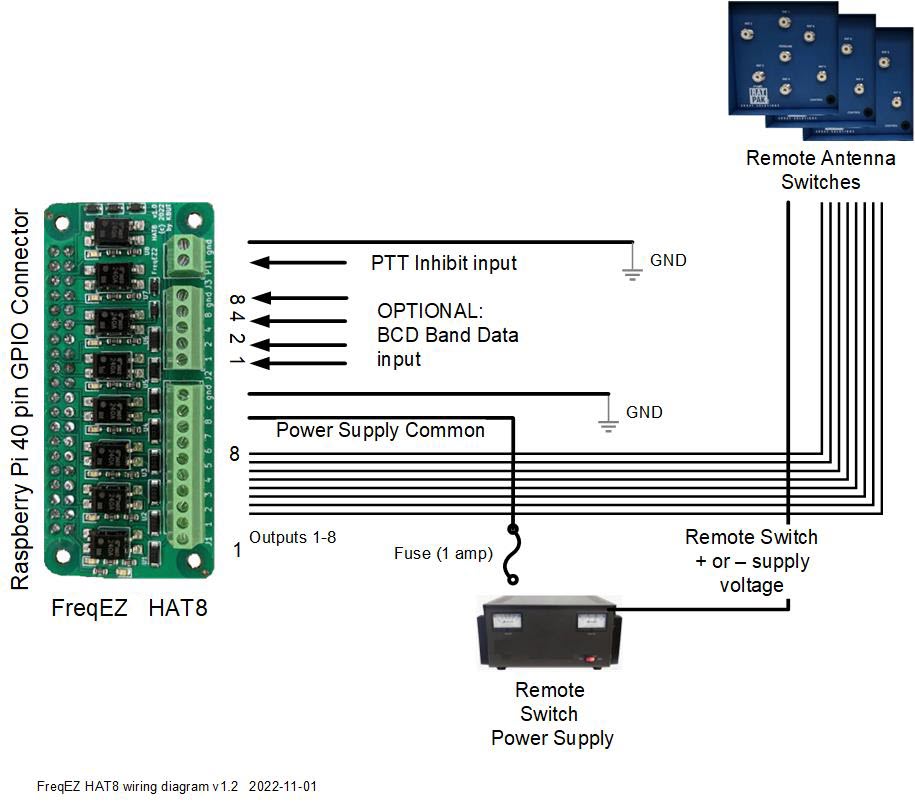
sep
Typical Wiring Diagram – 16 Outputs
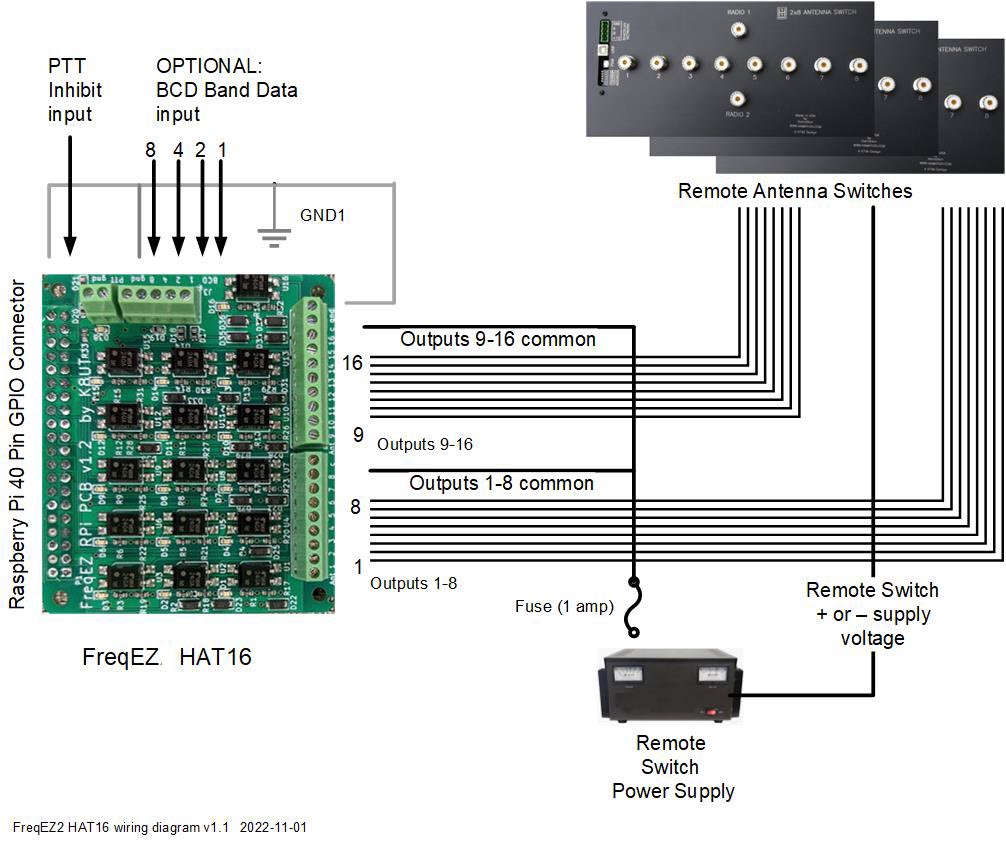
Software
- FreqEZ software is a pair of programs running a Windows FreqEZ Console (freqezwin) and a Raspberry Pi FreqEZ Controller (freqezrpi). Both programs are free to all hams

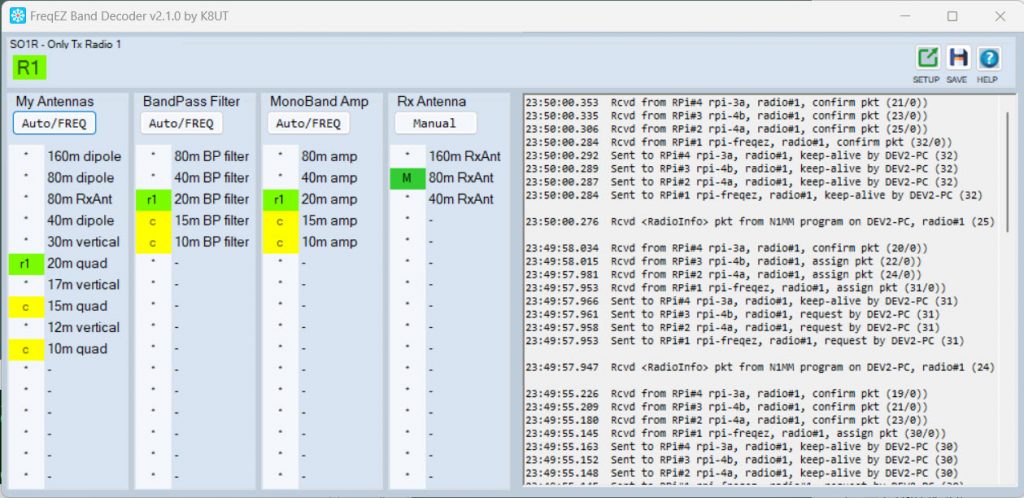
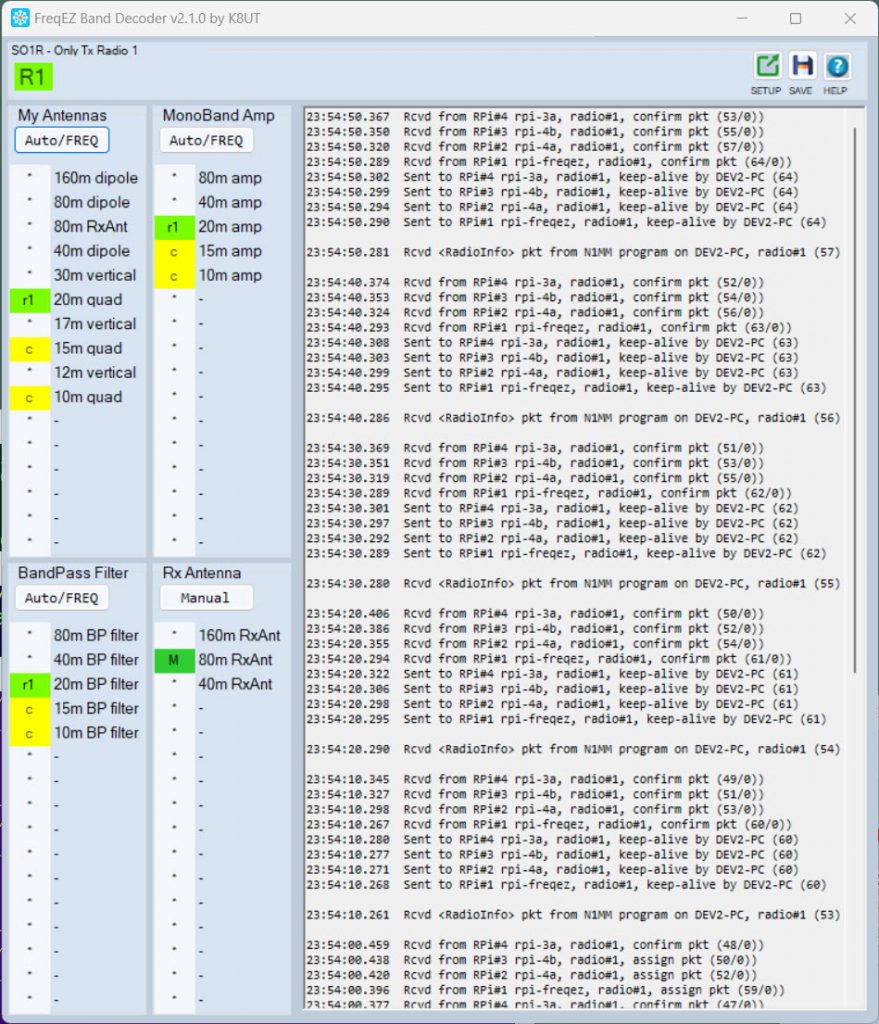
Hardware
- FreqEZ hardware uses a Raspberry Pi platform with a controller board to activate your remote antenna switches. The Controller hardware can be a pre-assembled and tested Raspberry Pi HAT (Hardware Attached on Top) circuit board purchased from K8UT or a Do-It-Yourself construction project from the provided parts list and documentation
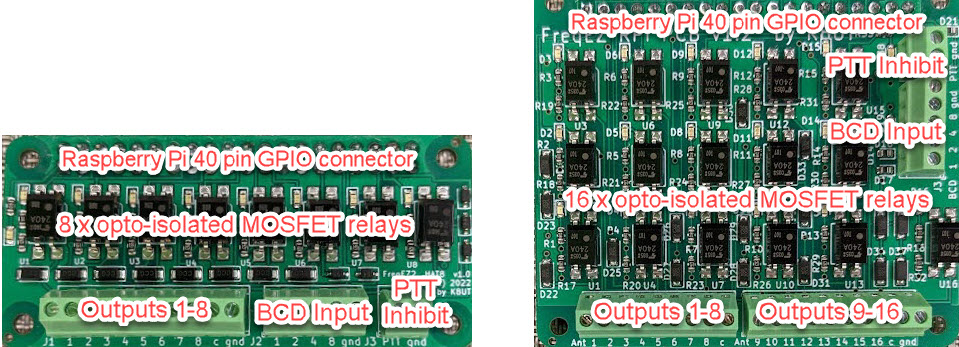
OR
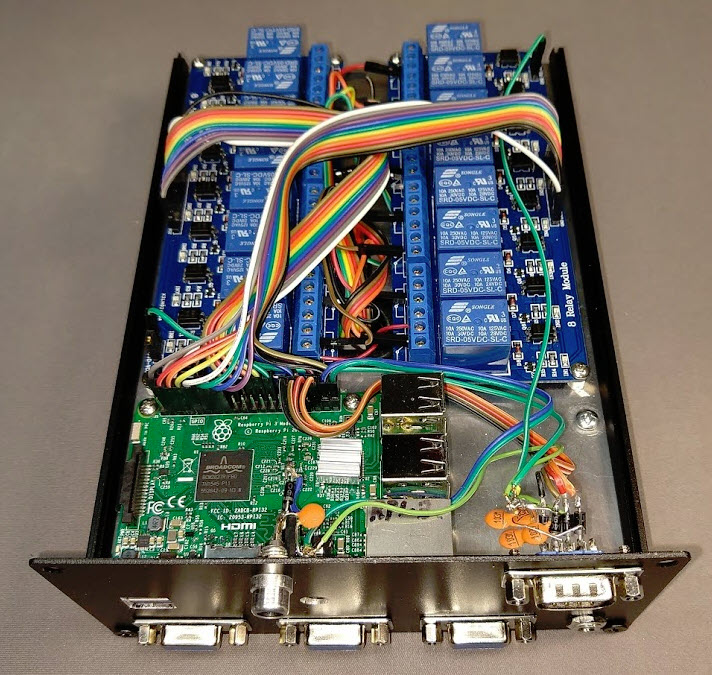
Required Materials
- FreqEZ HAT Controller Board or DIY Controller Assembly
- Raspberry Pi model 4 2gb recommended for HAT16; model Zero 2W for HAT8. However the HAT boards can run on any Raspberry Pi model 3 or 4 (see documentation for details)
- MicroSD card 16 gb or larger, Application Class recommended, Class 10 minimully sufficient
- Case for the Raspberry Pi (see photos in documentation)
- Power Supply or USB cable with connector that matches your Raspberry Pi
- Mouse, Keyboard and Monitor to use temporarily while configuring the Raspberry Pi
Helpful Freeware Apps
Although not required, you may find the following free Windows programs helpful in installing and troubleshooting FreqEZ.
- Raspberry Pi Imager – for creating the Raspbian operating system image from Windows to the microSD card
- WinSCP – for copying FreqEZ Controller files from Windows to the Raspberry Pi
- Putty telnet client – for downloading files and installing RPi FreqEZ Controller software via a terminal session
- Notepad++ – Excellent elternative to Notepad.exe for editing config and settings XML files.
